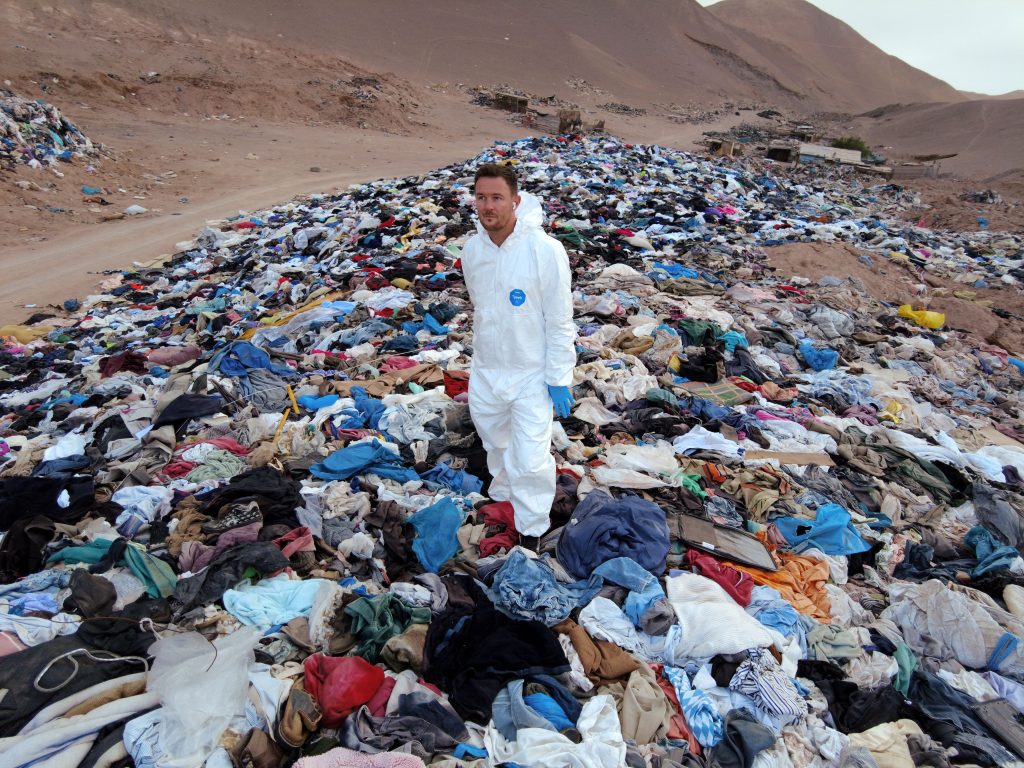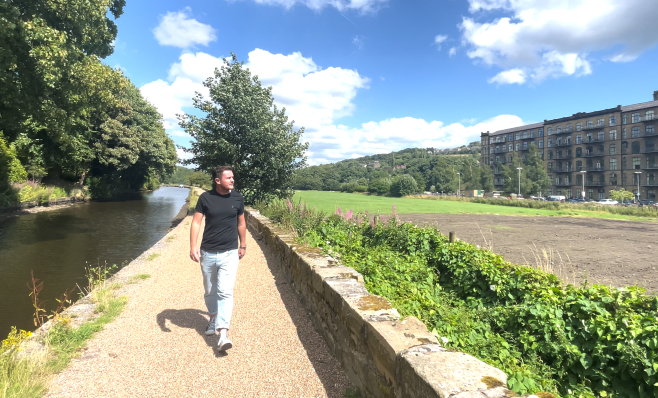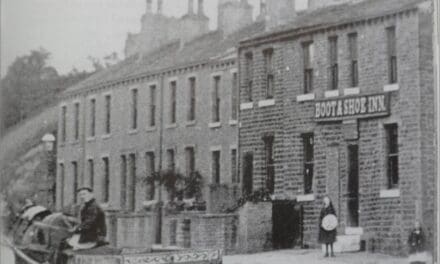Huddersfield-born artist Ian Berry creates stunning works of art from old denim.
But for him his art made from recycled jeans has never been about “sustainability.”
However, his attitude changed somewhat when he found himself in Santiago, Chile, and witnessed the impact of over-production and mountains of dumped clothing.
Ian, 38, said: “Sustainability is an overused and abused marketing word. I felt a fraud to use it. I’m not making a big difference, nor had it been the concept or point of my work.”
Having created portraits of three of Chile’s most popular musicians he had some free time in Santiago and decided to visit a clothes dump in the Atacama Desert outside Iquique in Alto Hospicio, a story which had gone viral.
Ian has piles of old jeans in his East London studio and it’s not hard to see the comparison with what he saw in the desert.
“While I may not talk about sustainability much, leaving it to those who know better, it doesn’t mean I don’t care about the core issues,” he said.
“Few know that I nearly went back to university in 2006 to study climate change after watching An Inconvenient Truth by Al Gore, but while I was recycling denim, I will be honest, I never even connected that to what I was doing.”
Since that first visit to Chile, Ian has been back twice more and the result is a documentary he’s made called ‘Fast Fashion’s Graveyard.’

Though not a documentary maker, Ian said: “I was taken aback by being there and just started to make little videos with my iPhone.
“I hadn’t intended to make a documentary and it’s been quite a learning curve. I’d researched the subject a lot before I first went but when there I had so many questions, many that people couldn’t answer.
“I also realised that there were very few people, if anyone, from outside South America that had ever gone there and when the story originally went viral it was all from one person’s footage. The news reporters had never been.
“While I don’t think it was on purpose, the reporting led to a misrepresented story of what was going on and who was responsible, mainly letting the viewer believe the brands were directly dumping their clothes there. It’s much more complex, and I had to return to find out more.”
Agence France-Presse’s research found that about 59,000 tons of clothing that wasn’t sold in Europe or the USA end up at the Freeport of Iquique every year.
Of that, at least 39,000 tons are moved into landfills in the desert typified by the one Ian visited in Alto Hospicio, the country’s poorest area.
On Ian’s second visit he worked with Estudio of.. in Iquique, a collective of creatives and artisans who have been working with recycled textiles and most proudly sporting secondhand clothes.
They grouped together to help Ian make flowers for a re-creation of his Secret Garden installation that was then displayed on the beach in the city during the Festival Desierto Sonoro with thousands of people passing through.
Ian, who grew up in Netherton and attended Newsome High School and Greenhead College, went on to investigate the truth behind the dump.
He also returned to his home town of Huddersfield to film at local mills to add some history and context, linking back to the Industrial Revolution.

Back in Chile the documentary shows Ian visiting the Freeport locations and Zofri, the area where the clothes arrive in bundles and are sold, under much secrecy.
While the imports had been portrayed as a bad thing, he also visited resellers in Santiago as well as secondhand stores that sell good secondhand clothes making them affordable for many Chileans and, of course, making the lifespan of the clothes longer.
Ian added: “I think most people watching the first wave of publicity about the dump blamed fast fashion and big name brands but I went around and found that all the items were unique, as in there weren’t batches of the same clothes.
“It’s not the brands who are directly responsible. That said, it is their name on the labels and our clothes dumped there, often after thinking we have done a good thing in donating to a charity shop.”
No release date has yet been announced for the documentary but Ian hasn’t ruled out showing it in Huddersfield later.
“I’d love to present the film back there once it is done and perhaps with an installation,” said Ian. “I’m always in dialogue with the curator of Huddersfield Art Gallery, Grant Scanlan.
“The plans for the Cultural Heart back there seem great and I really hope it will bring people back into Huddersfield town centre.”
Images courtesy: Estudio of… and IanBerry.Art


















